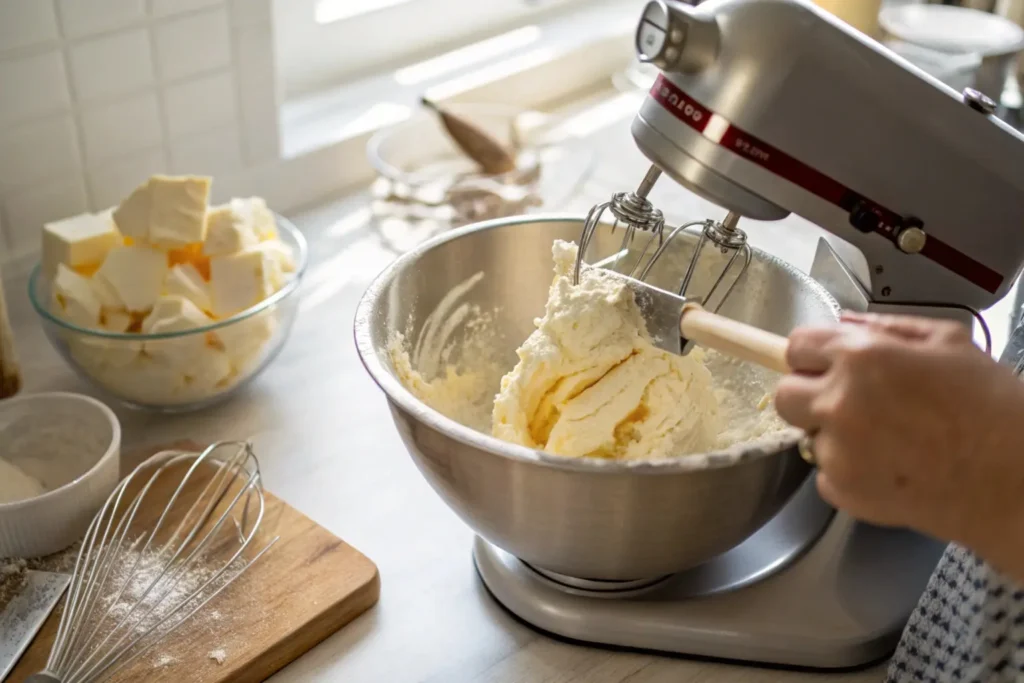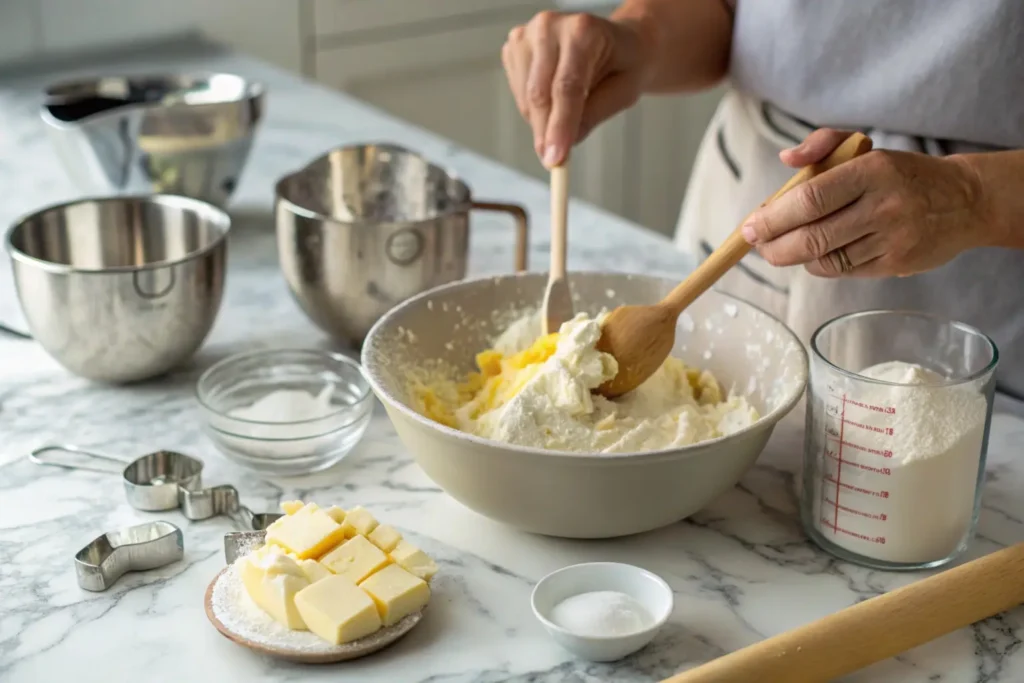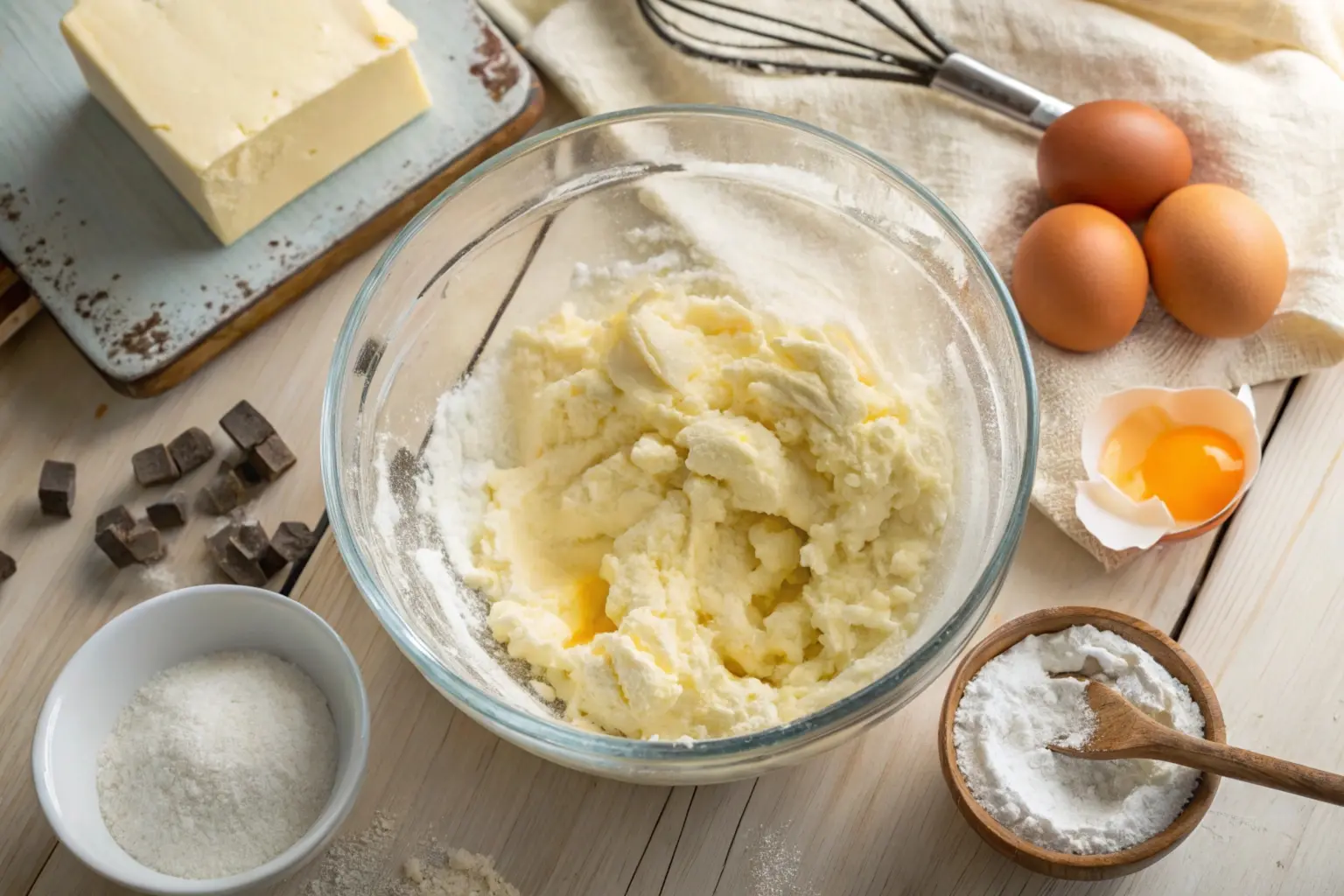If you’ve ever baked cookies, you’ve likely come across the term “cream the butter and sugar together.” But what exactly does this mean, and why is it so important? Creaming is a fundamental baking technique that sets the stage for soft, chewy, or perfectly textured cookies. Without it, your cookies could end up flat, dense, or completely lacking the tender crumb you’re aiming for.
In this guide, we’ll dive deep into what it means to cream in a cookie recipe. You’ll learn the purpose behind this step, how to do it properly, and the common mistakes to avoid. Whether you’re a seasoned baker or just starting, mastering this technique is essential for creating cookies that look and taste amazing.
Understanding the Creaming Method
Definition: What Does “Creaming” Mean in Baking?
At its core, creaming in baking refers to the process of mixing butter (or another fat) and sugar together until the mixture is light and fluffy. This step isn’t just about combining ingredients; it’s about incorporating air into the batter. The sugar granules cut into the butter, creating tiny air pockets that expand when heated, resulting in a lighter, more tender cookie.
This process is crucial in cookie recipes because it directly impacts texture and structure. When done right, it lays the foundation for soft and chewy cookies. But when skipped or rushed, the cookies may turn out dense or overly flat.
Why the Creaming Method Is Essential for Cookies
Why go to the trouble of creaming butter and sugar? Simply put, it’s the secret to perfectly balanced cookies. The air pockets formed during creaming allow the cookies to rise evenly, while the softened butter ensures a smooth batter. The sugar also helps to create those slightly crispy edges while keeping the centers moist.
If you’re wondering what does it mean to cream in a cookie recipe and why it’s non-negotiable, it’s because this method determines the overall success of your cookies. From texture to flavor, the creaming method sets the tone for your baking masterpiece.
How to Properly Cream Butter and Sugar
Step-by-Step Guide to Creaming

If you’ve ever wondered what does it mean to cream in a cookie recipe, it’s all about technique. Here’s how to get it right:
- Start with room temperature butter. Softened butter is key. It should be pliable but not melted, allowing it to incorporate air effectively.
- Combine butter and sugar in a mixing bowl. Use a stand or hand mixer to make the process easier and more efficient.
- Mix on medium speed. Begin mixing the butter and sugar until they’re fully combined. As you continue, the mixture will become lighter in color and fluffier in texture. This typically takes 2–4 minutes, depending on your mixer’s speed.
- Scrape down the bowl. Periodically stop the mixer and use a spatula to scrape the sides and bottom of the bowl. This ensures every bit of butter and sugar is evenly creamed.
Proper creaming creates a fluffy base that determines how light and airy your cookies turn out.
Tools You Need for Perfect Creaming
While you can cream butter and sugar by hand, a stand or hand mixer makes the job much easier. For best results:
- Use a paddle attachment on a stand mixer for even creaming.
- If using a hand mixer, opt for medium speed to avoid overmixing.
- Ensure your mixing bowl is large enough to accommodate the batter as air is incorporated.
A rubber spatula is also essential for scraping down the bowl and ensuring consistent results.
Tips for Avoiding Over or Under-Creaming
Avoiding extremes is key to successful creaming:
- Over-creaming introduces too much air, causing cookies to rise too quickly and then collapse.
- Under-creaming leaves the sugar insufficiently mixed, resulting in dense, uneven cookies.
Aim for a balanced, fluffy consistency to achieve the perfect cookie base.
Part 3: The Science Behind the Creaming Method
How Air Incorporation Affects Cookie Texture
The creaming process is more than just mixing—it’s a bit of science. When butter and sugar are creamed, sugar granules cut into the butter, creating tiny air pockets. These air pockets expand during baking, giving cookies their light and fluffy texture. The more air incorporated, the softer and more tender your cookies will be.
But there’s a catch. If you incorporate too much air, the cookies may puff up excessively in the oven and then collapse, leading to a deflated appearance and crumbly texture. That’s why moderation and technique are crucial when learning what does it mean to cream in a cookie recipe.
Role of Room Temperature Ingredients in Creaming
Room temperature butter and sugar are non-negotiable for effective creaming. Cold butter won’t mix properly, leaving you with uneven air incorporation. On the other hand, melted butter lacks structure and can lead to greasy, flat cookies.
Room temperature sugar also plays a role in achieving the right texture. The granules need to stay intact to cut into the butter effectively. If they dissolve prematurely (as with superfine or powdered sugar), you lose the opportunity to create those essential air pockets.
How Sugar Granules Impact the Creaming Process
The type of sugar you use matters. Granulated sugar is ideal for creaming because its coarse texture helps create more pronounced air pockets. Brown sugar, while softer, adds moisture and flavor without sacrificing texture.
For the best results, use a combination of granulated and brown sugar. This mix balances the structural benefits of granulated sugar with the moisture-retaining properties of brown sugar, ensuring cookies that are both soft and chewy.
Common Mistakes When Creaming in a Cookie Recipe
Over-Creaming: Too Much Air Can Ruin Texture
Over-creaming occurs when you mix butter and sugar for too long, incorporating an excessive amount of air into the batter. While creaming is crucial for texture, too much air can cause your cookies to rise excessively during baking and then collapse as they cool. This results in cookies that are dry and crumbly instead of soft and chewy.
To avoid over-creaming, keep an eye on the texture of your mixture. Once the butter and sugar turn pale and fluffy, stop mixing. This typically takes 2–4 minutes with a stand mixer on medium speed.
Under-Creaming: Why It Leads to Flat Cookies
On the flip side, under-creaming means the butter and sugar haven’t been mixed enough to incorporate sufficient air. Without enough air pockets, the cookies won’t rise properly and will likely spread too much during baking, resulting in flat, dense cookies.
If you’ve ever wondered what does it mean to cream in a cookie recipe and how to get it right, achieving the perfect balance is key. Make sure to mix the ingredients until they’re light and fluffy but not overworked.
Inconsistent Mixing and Its Effects on Cookie Dough
Failing to scrape down the sides of your bowl during creaming can lead to unevenly mixed dough. Some parts of the mixture may remain under-creamed, while others are over-creamed, resulting in inconsistent cookies. Use a rubber spatula to scrape the bowl periodically to ensure uniformity.
How the Creaming Method Differs for Cookies vs. Cakes
The Role of Wet and Dry Ingredients in Cookies
The creaming method plays a slightly different role in cookies compared to cakes. In cookie recipes, creaming primarily determines texture and spread. Proper creaming ensures a balance between a crispy edge and a soft center. The dry ingredients, like flour, combine with the creamed mixture to provide structure, while eggs and other liquids bind the dough together.
In cake recipes, however, creaming is more about creating a light and airy crumb. The batter is thinner, and the goal is to create maximum lift, resulting in a spongy texture.
Adding Wet Ingredients After Creaming in Cake Recipes
In cakes, wet ingredients like milk or buttermilk are often added after the creaming step to create a smoother batter. This differs from cookies, where the creamed butter and sugar are immediately followed by eggs and dry ingredients. If you’re mastering what does it mean to cream in a cookie recipe, remember that the process is less about building height and more about achieving the perfect texture.
Why Timing and Consistency Matter More for Cookies
Timing is crucial when creaming for cookies because it determines the dough’s consistency. Too much creaming leads to overly soft dough that spreads too much, while under-creamed dough can be stiff and hard to shape. Consistency is also vital, as unevenly mixed dough results in cookies that bake unevenly.
FAQs About Creaming in Cookie Recipes
Can You Cream Without a Mixer?

Yes, you can! While a mixer makes creaming easier and faster, it’s entirely possible to cream butter and sugar by hand. To do this, use a sturdy whisk or a wooden spoon. Start by softening the butter to room temperature, then combine it with sugar in a large bowl. Stir vigorously in circular motions until the mixture becomes pale and fluffy.
However, this method requires more effort and time. If you’re creaming by hand, it’s important to pace yourself and ensure the mixture is evenly aerated. For those wondering what does it mean to cream in a cookie recipe, it’s the process of introducing air, and that can be done manually with a bit of elbow grease.
How Long Should You Cream Butter and Sugar?
The creaming process typically takes 2–4 minutes when using a mixer at medium speed. But don’t rely solely on time; the visual cues are just as important. Look for a light, fluffy texture and a pale color. If the mixture looks grainy or dense, keep mixing.
Over-creaming, however, can introduce too much air, leading to cookies that rise and then fall flat. When in doubt, stop mixing once the butter and sugar are fully combined and fluffy. This balance is key to mastering what does it mean to cream in a cookie recipe.
What Happens if You Skip the Creaming Step?
Skipping the creaming step can drastically affect the outcome of your cookies. Without creaming, the butter and sugar won’t incorporate air, resulting in dense, flat cookies. Additionally, the sugar may not dissolve fully, leaving a gritty texture. If you’re aiming for soft, chewy cookies with a perfect crumb, the creaming step is non-negotiable.

